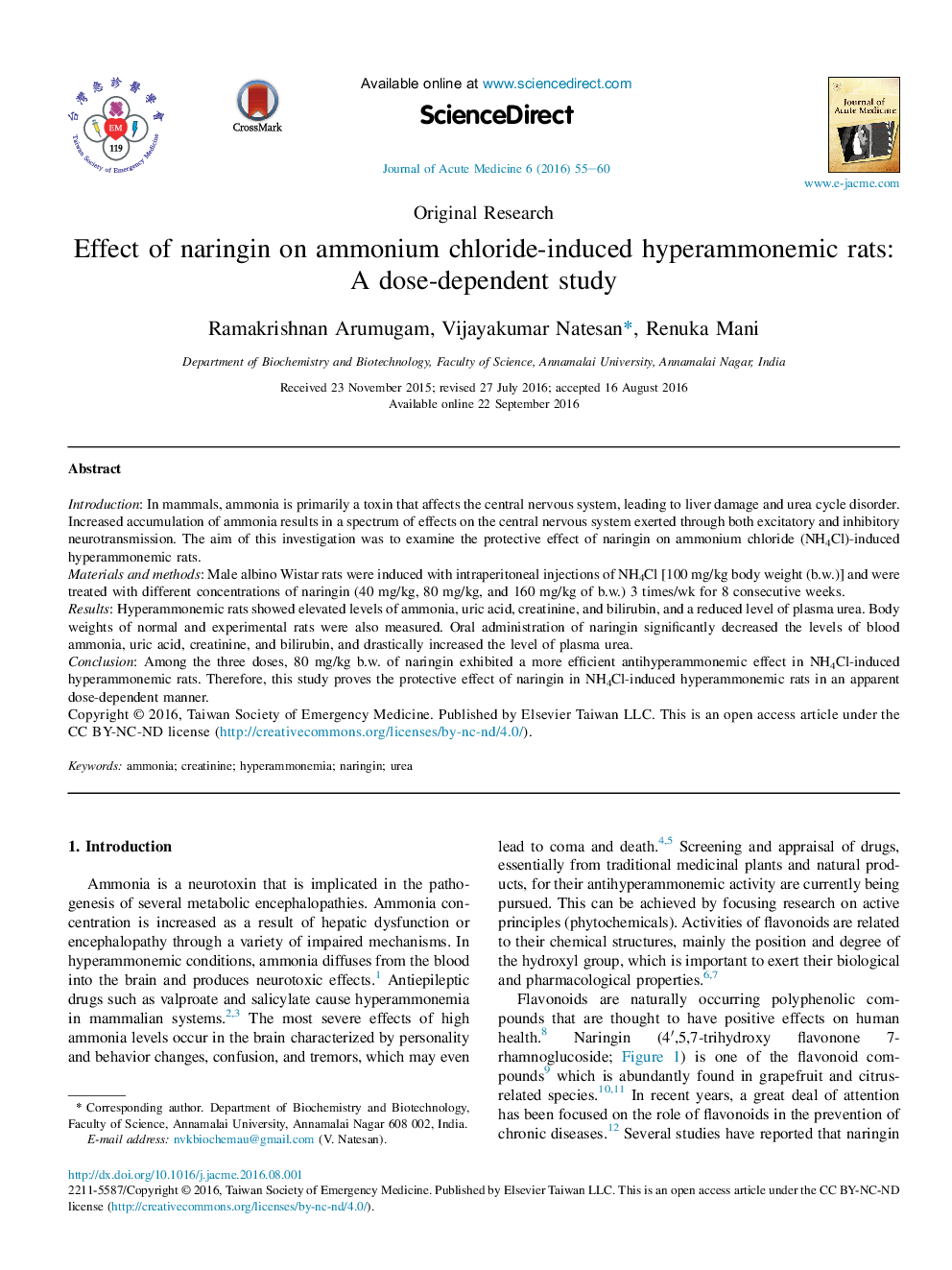| Article ID | Journal | Published Year | Pages | File Type |
|---|---|---|---|---|
| 5653170 | Journal of Acute Medicine | 2016 | 6 Pages |
IntroductionIn mammals, ammonia is primarily a toxin that affects the central nervous system, leading to liver damage and urea cycle disorder. Increased accumulation of ammonia results in a spectrum of effects on the central nervous system exerted through both excitatory and inhibitory neurotransmission. The aim of this investigation was to examine the protective effect of naringin on ammonium chloride (NH4Cl)-induced hyperammonemic rats.Materials and methodsMale albino Wistar rats were induced with intraperitoneal injections of NH4Cl [100Â mg/kg body weight (b.w.)] and were treated with different concentrations of naringin (40Â mg/kg, 80Â mg/kg, and 160Â mg/kg of b.w.) 3 times/wk for 8 consecutive weeks.ResultsHyperammonemic rats showed elevated levels of ammonia, uric acid, creatinine, and bilirubin, and a reduced level of plasma urea. Body weights of normal and experimental rats were also measured. Oral administration of naringin significantly decreased the levels of blood ammonia, uric acid, creatinine, and bilirubin, and drastically increased the level of plasma urea.ConclusionAmong the three doses, 80Â mg/kg b.w. of naringin exhibited a more efficient antihyperammonemic effect in NH4Cl-induced hyperammonemic rats. Therefore, this study proves the protective effect of naringin in NH4Cl-induced hyperammonemic rats in an apparent dose-dependent manner.
